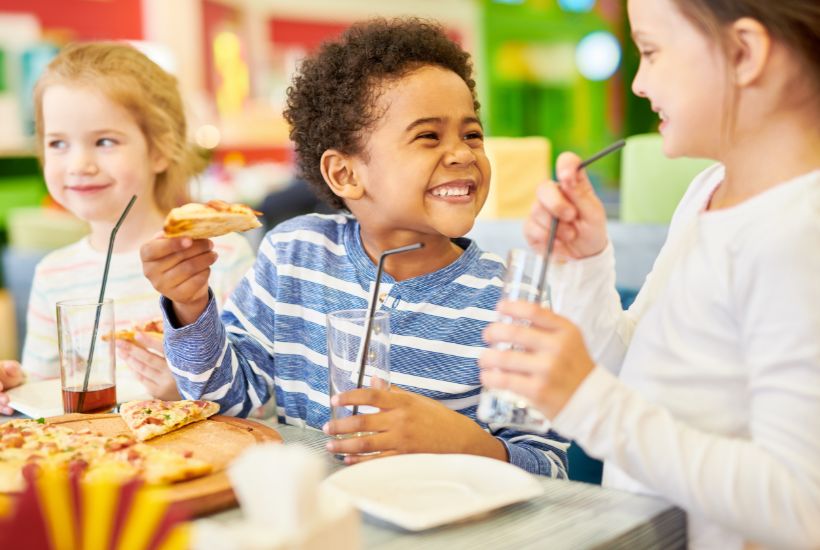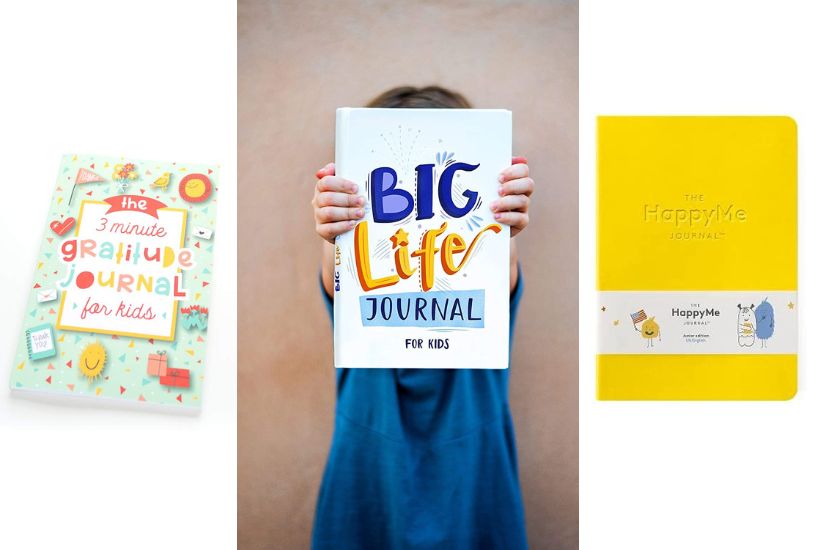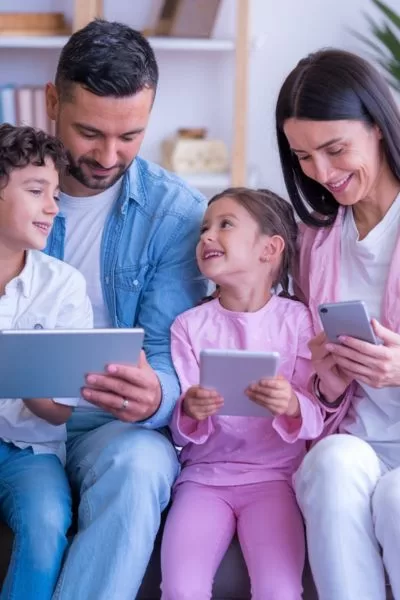15 Creative Ways to Raise Grateful Children
How do we raise grateful children in an entitled world? To raise grateful children, you must be creative and think outside the box.
As parents, we want to do everything we can to help our children be happy and fulfilled in life. But sometimes, it feels like a daunting task, especially when the world seems so entitled and materialistic.

Here are 14 creative ways to help your children feel grateful and find happiness in life:
- Model gratitude yourself.
- Make time for family traditions and rituals that focus on thankfulness
- Encourage them to write thank-you notes.
- Make a gratitude jar.
- Take them on volunteer vacations.
- Do a 30-day challenge.
- Play the giving game.
- Focus on the positive.
- Talk about what you’re thankful for at dinner.
- Practice random acts of kindness.
- Teach them how to meditate.
- Encourage them to keep a gratitude journal.
- Make a gratitude collage.
- Contribute to the home and community.
- Read books about thankfulness.
1# Model Gratitude
Show your children how important it is to you by expressing gratitude yourself. You can do this verbally, through notes, or even with actions.
You can model gratitude by focusing on the positive, being generous, and always saying please and thank you.
When your children see how important gratitude is to you, they will be more likely to understand how important it is for themselves.
It’s also essential to praise your child and affirm their positive traits and strengths.
Whenever a bad event happens, take a moment to discuss what good came from it.
Even if it’s something small, like being able to spend more time with family or getting a new toy, your children will learn that there is always something to be grateful for.
2# Make Time for Traditions and Rituals
If you make time for traditions and rituals that focus on thankfulness, your children will be more likely to understand gratitude’s importance.
You can have a nightly family dinner where everyone goes around and says what they’re grateful for or take a nature walk each week to appreciate the world around you.
We also like to conduct family meetings once a week to discuss the week’s failures, successes, and experiences and how we can learn from them.
At the end of each meeting, we each say one thing that we’re grateful for. These traditions will help instill a sense of gratitude in your children.
There are many ways to incorporate gratitude into your family traditions, so get creative and find what works best for you.
Families who make time for traditions and rituals that focus on thankfulness are more likely to have children who understand gratitude’s importance.
3# Encourage Them to Write Thank-You Notes
One of the best ways to teach your children how to express gratitude is by encouraging them to write thank-you notes.
You can start by having them write a note to you and then move on to grandparents, aunts, uncles, and friends.
Writing thank-you notes is a great way for children to practice expressing gratitude in a thoughtful and more personal way.
Plus, it’s a tradition that will likely stick with them for years to come.
4# Make a gratitude jar.
A gratitude jar is a great way to help your children visualize how much they have to be thankful for.
This is a fun activity that the whole family can do together.
Every time something good happens or someone does something kind, have your children write it down and put it in the jar.
At the end of each week, read through the things you’re grateful for together.
This is a great activity at the end of each day or week. It’s fun for children to see how much they have to be thankful for and will help them appreciate the good moments more.
5# Take Them on Volunteer Vacations
Volunteer vacations are a great way to teach your children about giving back.
Many different organizations offer volunteer vacations, so you can find one that fits your family’s interests.
This is a great way to spend time together as a family and make a difference in the world.
6# Do a 30-Day Challenge.
A 30-day challenge is a great way to focus on gratitude for an extended period of time.
There are many different ways to do a 30-day challenge, but one way is to have your family members write down three things they’re grateful for each day.
At the end of the month, you can read through everything you’ve written and reflect on how much you have to be thankful for.
This is a great way to teach your children how to focus on the positive and be grateful for what they have.
7# Play the giving game.
The giving game is a fun way to teach your children about giving.
You can start by having your children choose one toy to give away to someone who they think would appreciate it.
Then, you can move on to giving away clothes, books, and other items.
This is a great way to teach your children the importance of giving and how good it feels to help others.

8# Focus on the positive.
Focusing on the positive, especially when raising grateful children, is essential.
There are many ways to do this, but one way is to make sure you’re talking about the good things that happen each day.
You can also ensure your children have a positive attitude by leading by example. If you’re always complaining, they’re likely to do the same.
But they’re more likely to do the same if you’re always looking for the good in every situation.
If you usually are a critical person, make it a challenge to discover something positive in any scenario.
It may be difficult at first, but it will get easier with practice. And your children will benefit from your positive attitude.
I like to wear three bands on my right arm, and whenever I become critical or negative about something, I have to switch the bands to my left arm.
It’s a physical way of reminding myself to focus on the positive.
You can also try this with your children. Give them each a bracelet or band to wear on their right arm.
Whenever they are critical or negative, they have to switch the bracelet to their left arm.
It’s a fun way to teach them how to focus on the positive and be grateful for what they have.
9# Talk about what you’re thankful for at dinner.
One of the best ways to teach your children about gratitude is to talk about what you’re thankful for at dinner.
You can go around the table and have everyone share one thing they’re grateful for that day.
This is a great way to start conversations about gratitude and help your children focus on the good things in their lives.
I like to ask questions like, “What was the best part of your day?” or “What made you smile today?”
These questions can help start the conversation and help your children focus on the positive.
10# Practice random acts of kindness.
Random acts of kindness are a great way to teach your children about gratitude.
Not only will they learn how good it feels to help others, but they’ll also start to see how much they have to be thankful for.
There are many ways to do random acts of kindness, but some ideas include leaving a note for someone, helping a neighbor, or putting water out for the birds.
You can make it a family activity and do random acts of kindness together.
These are just a few ideas to get you started. I’m sure you can think of many more creative ways to teach your children about gratitude.
The most important thing is to start now.
11# Teach them how to meditate.
Many people think that meditation is only for adults, but it’s a great way to teach children about gratitude.
Meditation can help children learn how to focus on the present moment and be thankful for what they have.
There are many different ways to meditate, but one way is to have your children sit or lie down in a comfortable position.
Then, have them close their eyes and focus on their breath.
They can count each breath or simply focus on the feeling of their breath going in and out.
If they start to think about other things, that’s okay. They can just let those thoughts go and return to their breath.
After a few minutes, they can open their eyes and talk about what they’re feeling.
This is a great way to help your children learn how to be grateful for the present moment.
12# Encourage them to start a gratitude journal.
Another great way to teach your children about gratitude is to start a gratitude journal.
This can be as simple as a notebook where they write down one thing they’re grateful for daily.
Or, you can purchase a special gratitude journal with prompts and activities to help them get started.
Encourage your children to write in their gratitude journal daily or even once a week.
This is an excellent way for them to reflect on the things they’re grateful for and see how much they have in their lives.
some great gratitude journals for children are :

13# Make a gratitude collage.
One fun way to teach children about gratitude is to make a gratitude collage.
You can do this with construction paper, magazines, markers, and glue.
First, have your children think of everything they’re grateful for.
Then, they can look through magazines or construction paper to find pictures or words representing those things.
Finally, they can glue those pictures and words onto a piece of paper to create their gratitude collage.
This is an excellent way for them to visually see all the things they have to be grateful for.
14# Encourage them to contribute to the home and community.
Another great way to teach children about gratitude is to encourage them to contribute to the home and community.
This can be done in many ways, but some ideas include helping with chores around the house, volunteering at a local organization, or picking up litter in the neighborhood.
Helping others is a great way to teach children how good it feels to be grateful.
15# Read books about thankfulness.
Finally, one of the best ways to teach children about gratitude is to read books about thankfulness.
There are many great books out there that can help your children learn how to be grateful.
Some of my favorites include “The Things I’m Grateful For” by Arnie Lightning, “Gratitude is My Superpower” by Alicia Ortego, and “Grunt the Grizzly Learns to Be Grateful” by Misty Black.
Reading these books with your children is a great way to start a discussion about gratitude.
Benefits of teaching children gratitude
There are many benefits to teaching children gratitude.
Some of the benefits include:
- Helping them to be happier
- Improving their mental and physical health
- Teaching them how to be more resilient
- Encouraging them to be more generous
- Improving relationships.
When children learn how to be grateful, they’re setting themselves up for a lifetime of happiness and success.
Create a habit of gratitude in your children, they will be more likely to see the good in the world and feel happier overall.
I hope these ideas have inspired you to start teaching your children about gratitude. Gratitude is an important character trait, and it’s never too early to start teaching it.
I’m sure you can think of many more creative ways to teach your children about gratitude.
No matter what method you choose, teaching your children how to be grateful will help them lead happier and more fulfilling lives. Gratitude is one of the most important lessons you can give your children, so start today.
Please share this post if you found it helpful.
Happy parenting!







2 Comments
Comments are closed.